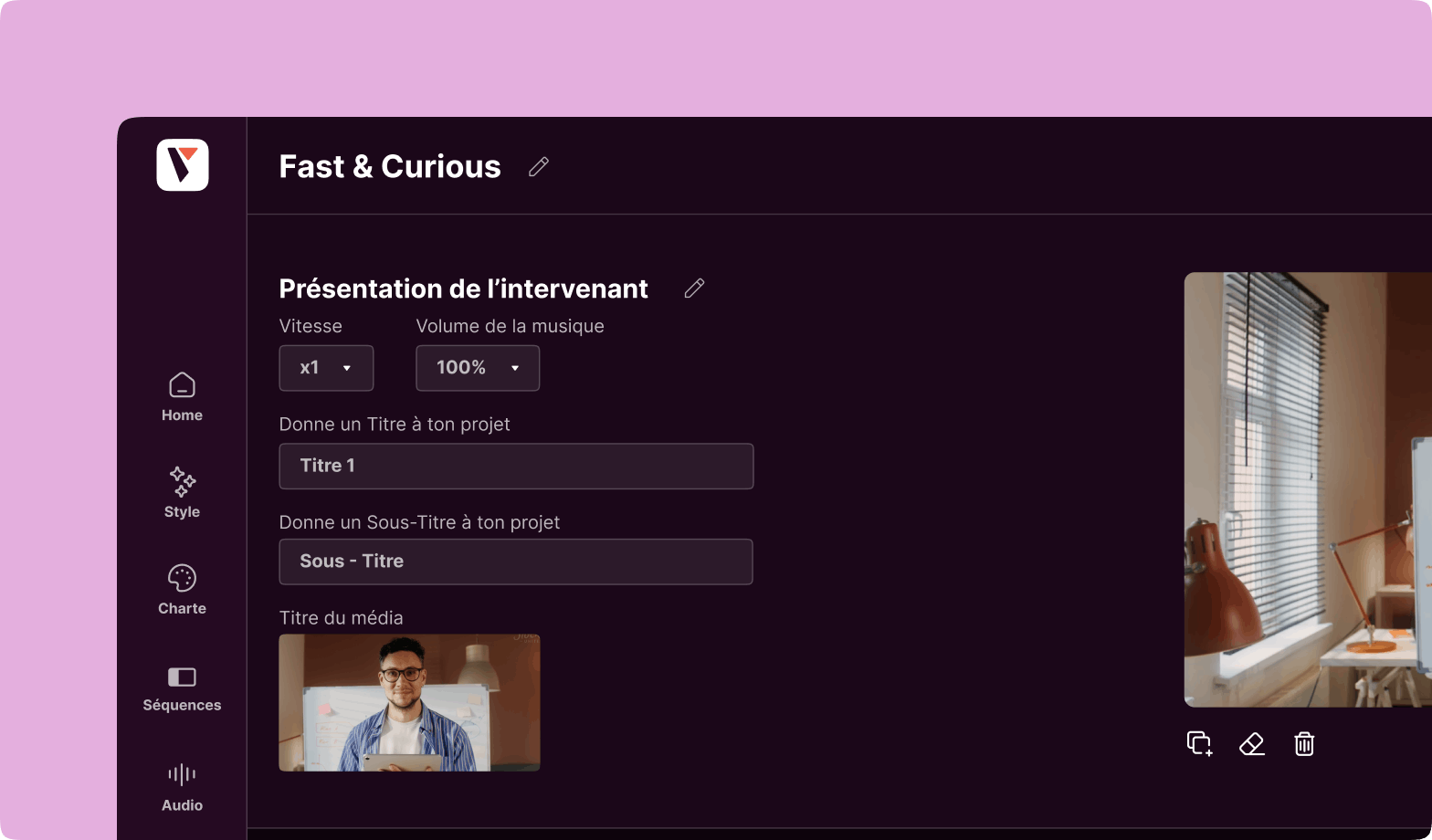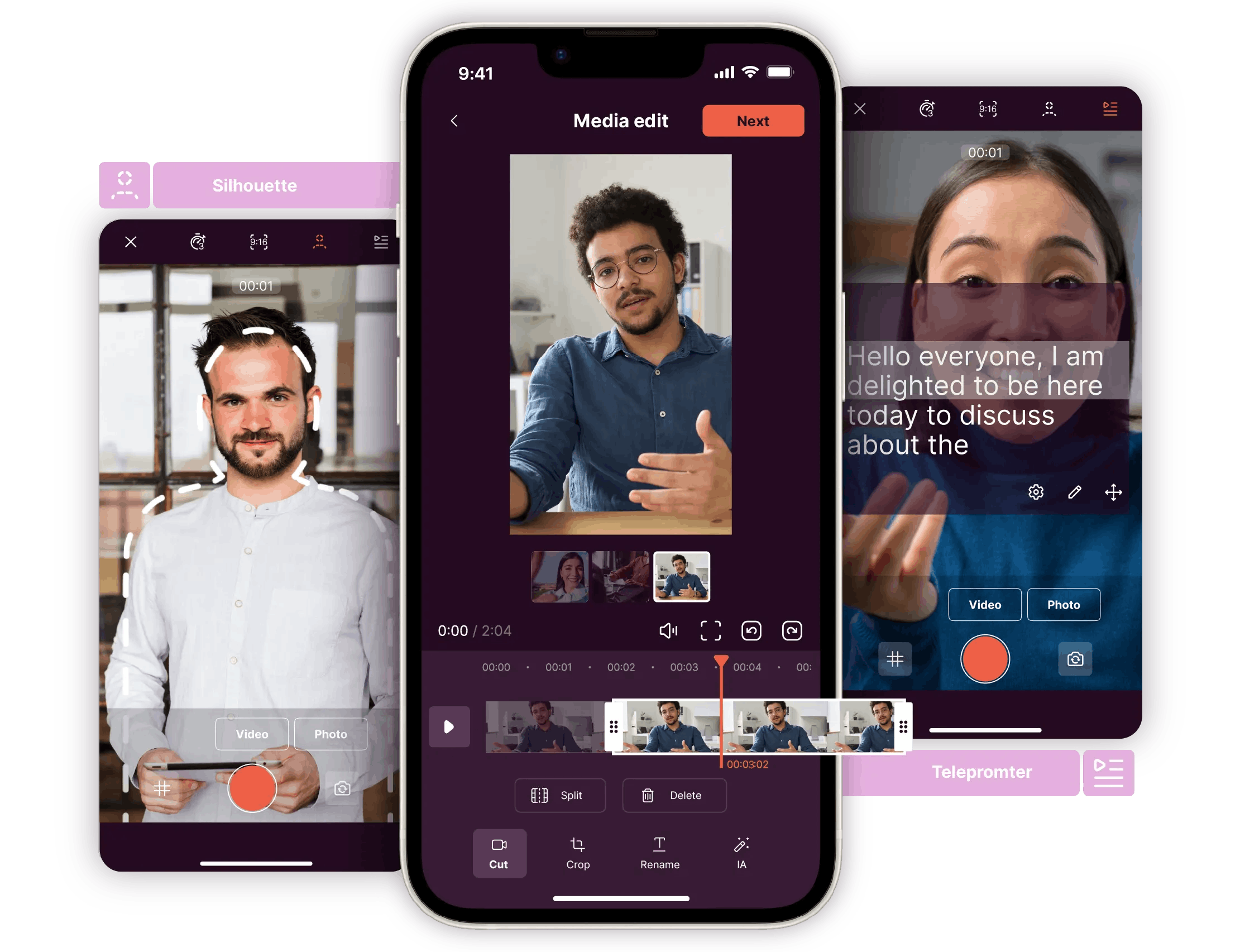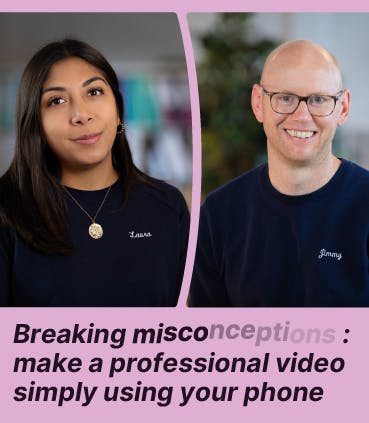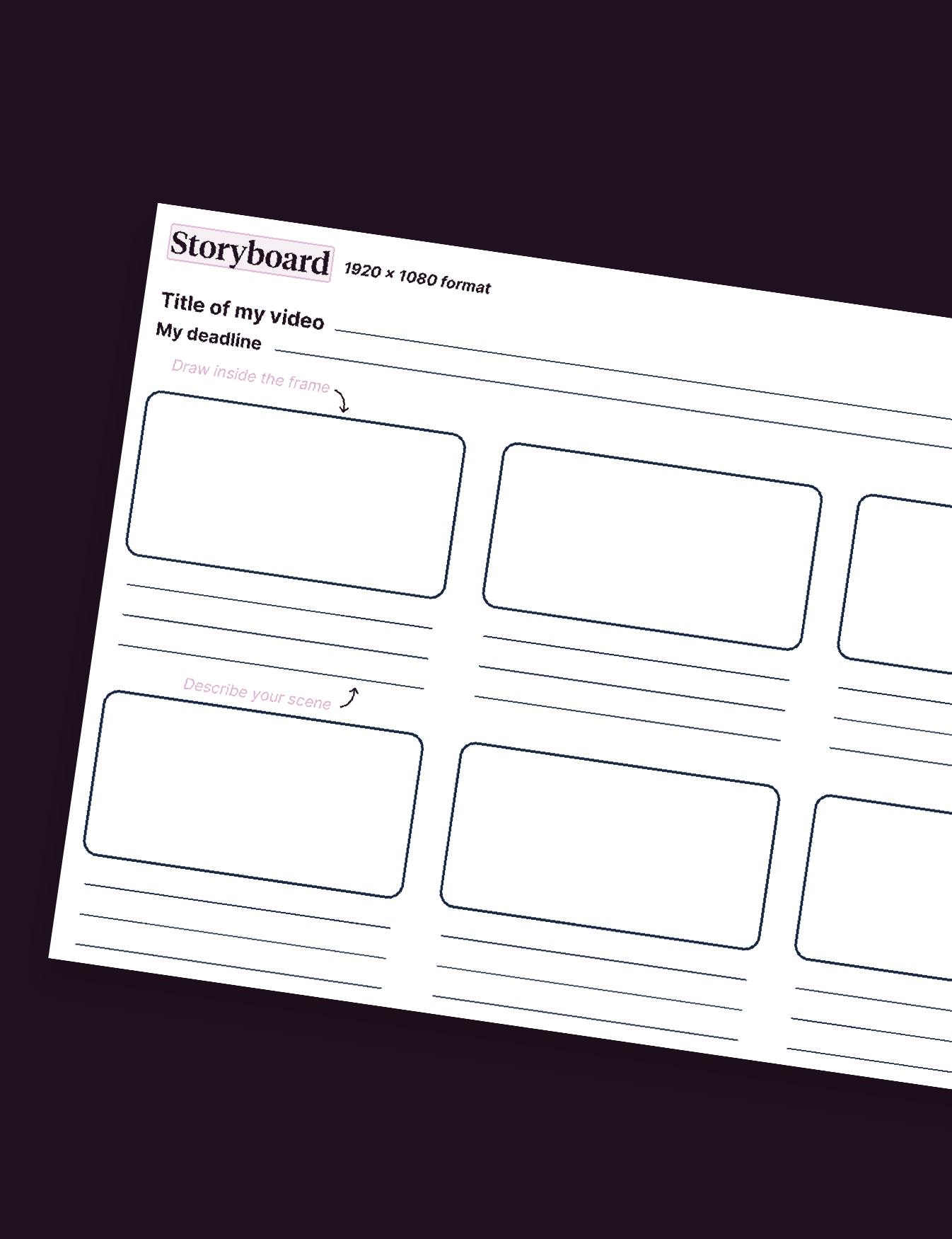Maximising Employee Engagement with Effective Internal Communication Videos

In today's fast-paced corporate world, effective internal communication is essential for the success of any organization. While traditional methods such as emails and memos have their place, they often fall short in capturing employees' attention and fostering engagement. As technology continues to evolve, companies are turning to internal communication videos as a powerful aid to convey messages in a compelling and memorable way. In this article, we'll explore the importance of internal communication videos and provide strategies for creating captivating messages that resonate with employees.
The Importance of Videos in Internal Communication
Effective internal communication is the cornerstone of any successful organization. It fosters collaboration, boosts morale, and ensures that everyone is working towards common goals. In today's digital age, where remote work and global teams are increasingly common, traditional methods of communication such as emails and memos are no longer sufficient. Organizations need to embrace innovative solutions to connect with their employees effectively. One such solution is the use of videos in internal communication.
Videos have emerged as a powerful tool for conveying messages within organizations. They offer a dynamic and captivating way to communicate complex information quickly and effectively. Unlike text-based communication, videos stimulate both visual and auditory senses, making them more memorable and impactful. Whether it's a message from the CEO, a training session, or a company announcement, videos have the power to capture the attention of employees and deliver messages in a compelling manner.
Overcoming Language Barriers with Video
In today's globalized world, many organizations have teams spread across different regions and cultures. While diversity is a strength, it can also pose challenges when it comes to communication, particularly language barriers. Traditional written communication may not always be effective in reaching employees who speak different languages or have varying levels of proficiency.
Video offers a solution to this challenge by providing a universal language that transcends linguistic barriers. Visual cues, such as facial expressions, body language, and imagery, can convey meaning in a way that is easily understood by people from diverse backgrounds. By using videos in internal communication, organizations can ensure that all employees, regardless of their language or location, receive the same message and feel included in the conversation.
To maximize the effectiveness of videos in internal communication, organizations should strive to create a universal visual language that resonates with their entire team. This involves carefully designing videos to ensure that they are accessible and attractive to employees from diverse backgrounds.
One way to create a universal visual language is by using simple and clear visuals that can be easily understood by everyone. Avoiding complex jargon and technical language can help ensure that the message is accessible to all employees, regardless of their level of expertise.
Another important aspect of creating a universal visual language is ensuring that videos are culturally sensitive and inclusive. This means being mindful of cultural differences and avoiding imagery or language that may be offensive or alienating to certain groups of people. By incorporating diverse perspectives and experiences into their videos, organizations can create a sense of belonging and unity among employees.
In addition to visual elements, organizations should also consider incorporating subtitles or translations into their videos to ensure that all employees can understand the message. This is particularly important for global teams where employees may speak different languages or have varying levels of proficiency in the primary language of communication.

How to Create Engaging Internal Communication Videos
While traditional methods such as emails and meetings have their place, internal communication videos have emerged as a powerful aid for workers and conveying messages in a compelling way. In this section, we'll explore strategies for creating engaging internal communication videos that captivate your audience and drive meaningful results.
Key Elements of Successful Internal Videos
When creating internal communication videos, several key elements can significantly enhance their effectiveness:
1. Clear Objective:
Before you start filming, define the purpose of your video. Are you announcing a new company initiative? Providing training materials? Or perhaps sharing a message from the leadership team? Having a clear objective will help you focus your message and ensure that your video resonates with your audience.
2. Audience-Centric Approach:
Know your audience and tailor your message to meet their needs and interests. Consider factors such as demographics, job roles, and communication preferences when crafting your video. By addressing the specific concerns and challenges of your audience, you can create content that is relevant and engaging.
3. Compelling Visuals:
Visuals play a crucial role in capturing viewers' attention and conveying information effectively. Use high-quality images, graphics, and animations to enhance your message and create a visually appealing experience for your audience. However, be mindful not to overload your video with too many visuals, as this can distract from the main message. Pitchy offers a wide range of video templates and visual assets tailored for different purposes such as marketing, sales, training, and internal communication. These templates provide a framework for creating videos, making the process easier for users who might not have extensive video production experience.
4. Engaging Script:
Craft a script that is clear, concise, and engaging. Start with a strong hook to grab viewers' attention and maintain their interest throughout the video. Use conversational language and storytelling techniques to make your message relatable and memorable. Remember to keep your script focused on the key points you want to convey and avoid unnecessary jargon or technical language.
5. Authentic Delivery:
Authenticity is key to building trust and credibility with your audience. Encourage presenters to speak naturally and express genuine emotions. Avoid overly scripted or rehearsed delivery, as this can come across as insincere. Authenticity helps to establish a connection with viewers and makes your message more impactful.
6. Call to Action:
End your video with a clear call to action that prompts viewers to take the next steps. Whether it's signing up for a training session, completing a survey, or sharing feedback, a call to action encourages engagement and reinforces the message of your video.The Pitchy tool can help you add a powerful CTA in any of your videos.
Storytelling Techniques for Employee Engagement
Storytelling is a powerful aid for engaging workers and conveying complex information in a memorable way. Here are some storytelling techniques to incorporate into your internal communication videos:
1. Personal Anecdotes:
Share personal stories or anecdotes that illustrate key points and make your message more relatable. Personal stories help to humanize the message and create an emotional connection with viewers.
2. Hero's Journey:
Frame your ideas as a journey with a beginning, middle, and end. Identify the challenges or obstacles faced by your organization and highlight how staff members can overcome them to achieve success. The hero's journey narrative structure captivates viewers and inspires them to take action.
3. Visual Storytelling:
Use visuals to enhance your storytelling and convey information in a visual format. Incorporate images, graphics, and animations that support your narrative and help to bring your message to life.
4. Conflict and Resolution:
Introduce a conflict or problem that needs to be addressed, and then present a solution or resolution. Highlighting the challenges faced by your organization and demonstrating how employees can contribute to solving them fosters a sense of purpose and empowerment.
5. Empathy and Understanding:
Show empathy towards the experiences and perspectives of your target. Acknowledge their concerns and challenges, and demonstrate how your message addresses their needs and interests. Empathetic storytelling builds trust and rapport with viewers, making them more receptive to your words.

The Impact of Video on Organizational Culture
As organizations strive to foster a positive and inclusive culture, the use of video has emerged as a powerful tool for shaping and reinforcing these cultural attributes. In this article, we'll explore the impact of video on organizational culture and examine how companies are leveraging this medium to build personal connections and drive engagement.
Building a Personal Connection Through Video
One of the most significant benefits of using video in organizational communication is its ability to build a personal connection with workers. Unlike text-based communication, which can feel impersonal and detached, video allows for face-to-face interaction, even in a digital environment. This personal touch helps to humanize the meaning of the video and build rapport between leaders and employees.
Authentic Communication:
Video enables leaders to communicate authentically and transparently with employees. By speaking directly to the camera, leaders can convey sincerity and empathy, fostering trust and credibility among their teams. This authenticity is essential for building a positive organizational culture based on openness and honesty.
Employee Engagement:
Video is a highly engaging medium that captures the attention of viewers and keeps them actively involved in the communication process. Whether it's a note from the CEO, a virtual town hall meeting, or a team-building exercise, video encourages active participation and fosters a sense of belonging among employees.
Accessibility and Inclusivity:
Video transcends geographical barriers and allows organizations to reach employees across different locations and time zones. This accessibility is particularly valuable for global companies with diverse workforces. By providing translated subtitles or sign language interpretation, organizations can ensure that all employees can access and understand the content, promoting inclusivity and diversity within the workplace.
Examples of Successful Video Communications in Major Companies
Several major companies have embraced video as a central component of their internal communication strategy, with impressive results:
1. Google:
Google is known for its innovative approach to internal communication, and video plays a significant role in fostering a sense of community among its employees. The company regularly produces high-quality videos featuring updates from senior leaders, employee spotlight interviews, and virtual team-building activities. These videos help to reinforce Google's values of collaboration, creativity, and transparency, contributing to a vibrant and inclusive organizational culture.
2. Microsoft:
Microsoft has embraced video as a means of connecting its global workforce and driving engagement. The company uses video for a wide range of purposes, including training sessions, product demonstrations, and corporate announcements. By leveraging Microsoft Teams and other digital platforms, employees can access video content anytime, anywhere, fostering a culture of continuous learning and collaboration.
3. Salesforce:
Salesforce is committed to designing a culture of trust, equality, and belonging, and video plays a crucial role in achieving this goal. The company produces a variety of video content, including CEO updates, employee testimonials, and virtual events. Salesforce also hosts an annual "Dreamforce" conference, which has transitioned to a virtual format in recent years, allowing employees from around the world to participate in keynotes, workshops, and networking opportunities.
Implementing Video Communication Strategy Effectively
With the rise of remote work and distributed teams, organizations are increasingly turning to video communication as a powerful tool for connecting with employees and conveying messages in a compelling and engaging way.
Steps to Integrate Video into Your Internal Communication
Integrating video into your internal communication strategy requires careful planning and execution. Here are some steps to help you get started:
1. Define Your Objectives:
Begin by identifying the goals and objectives of your video communication strategy. Are you looking to improve employee engagement, streamline training processes, or enhance collaboration among teams? Clarifying your objectives will help you tailor your video content to meet the specific needs of your organization.
2. Choose the Right Tools:
Selecting the right video communication tools is essential for ensuring seamless integration into your existing workflows. Consider factors such as ease of use, scalability, and compatibility with your organization's technology infrastructure. Popular options include video conferencing platforms like Zoom and Microsoft Teams, as well as video creation tools like Loom and Camtasia.
3. Create Compelling Content:
Invest time and resources in making high-quality video content that resonates with your audience. Whether it's company announcements, training modules, or employee testimonials, focus on delivering value and engaging viewers from start to finish. Incorporate storytelling techniques, visuals, and interactive elements to make your videos memorable and impactful.
4. Establish Consistent Branding:
Maintain consistency in branding across all your video communication efforts to reinforce your organization's identity and values. Use consistent colors, fonts, and logos to make a cohesive visual identity that reflects your brand personality. Consistent branding helps to build trust and credibility with your target and ensures that your words are easily recognizable.
5. Encourage Participation and Feedback:
Encourage active participation and feedback from employees to foster a culture of collaboration and continuous improvement. Provide opportunities for employees to share their thoughts, ask questions, and contribute ideas through interactive features such as polls, surveys, and live Q&A sessions. Actively soliciting feedback demonstrates that you value employees' input and are committed to listening to their needs.
Measuring the Success of Your Video Communication Efforts
Measuring the success of your video communication efforts is essential for evaluating performance, identifying areas for improvement, and demonstrating ROI. Here are some key metrics to consider:
1. Engagement Metrics:
Track metrics such as view count, watch time, and engagement rate to gauge how actively your audience is interacting with your video content. High levels of engagement indicate that your videos are resonating with your followers and driving meaningful interactions.
2. Feedback and Surveys:
Gather feedback from employees through surveys, polls, and focus groups to understand their perceptions and preferences regarding your video communication efforts. Ask specific questions about the clarity of the message, the quality of the content, and the overall effectiveness of the videos.
3. Performance Metrics:
Evaluate the impact of your video communication strategy on key performance indicators such as employee satisfaction, productivity, and retention. Compare performance metrics before and after implementing video communication to assess the effectiveness of your efforts.
4. ROI Analysis:
Conduct a cost-benefit analysis to determine the return on investment (ROI) of your video communication strategy. Calculate the costs associated with producing and distributing video content and compare them to the benefits achieved, such as increased productivity, reduced travel expenses, and improved employee engagement.
5. Continuous Improvement:
Use insights from performance data and employee feedback to identify areas for improvement and refine your video communication strategy over time. Experiment with different formats, styles, and delivery methods to see what resonates best with your audience and drives the desired outcomes.
Videos have become an indispensable tool for internal communication in today's digital workplace. By leveraging the power of video, organizations can overcome language barriers, foster a sense of unity, and ensure that all employees feel included and engaged. Whether it's sharing important updates, delivering training materials, or reinforcing company values, videos offer a dynamic and effective way to communicate with employees across the globe. By embracing video as a communication tool and creating a universal visual language for their team, organizations can build a more connected and cohesive workforce.
Ready to take your internal communication videos to the next level? Book a demo today to discover how Pitchy can revolutionize your video production process and elevate your storytelling.
Resources













